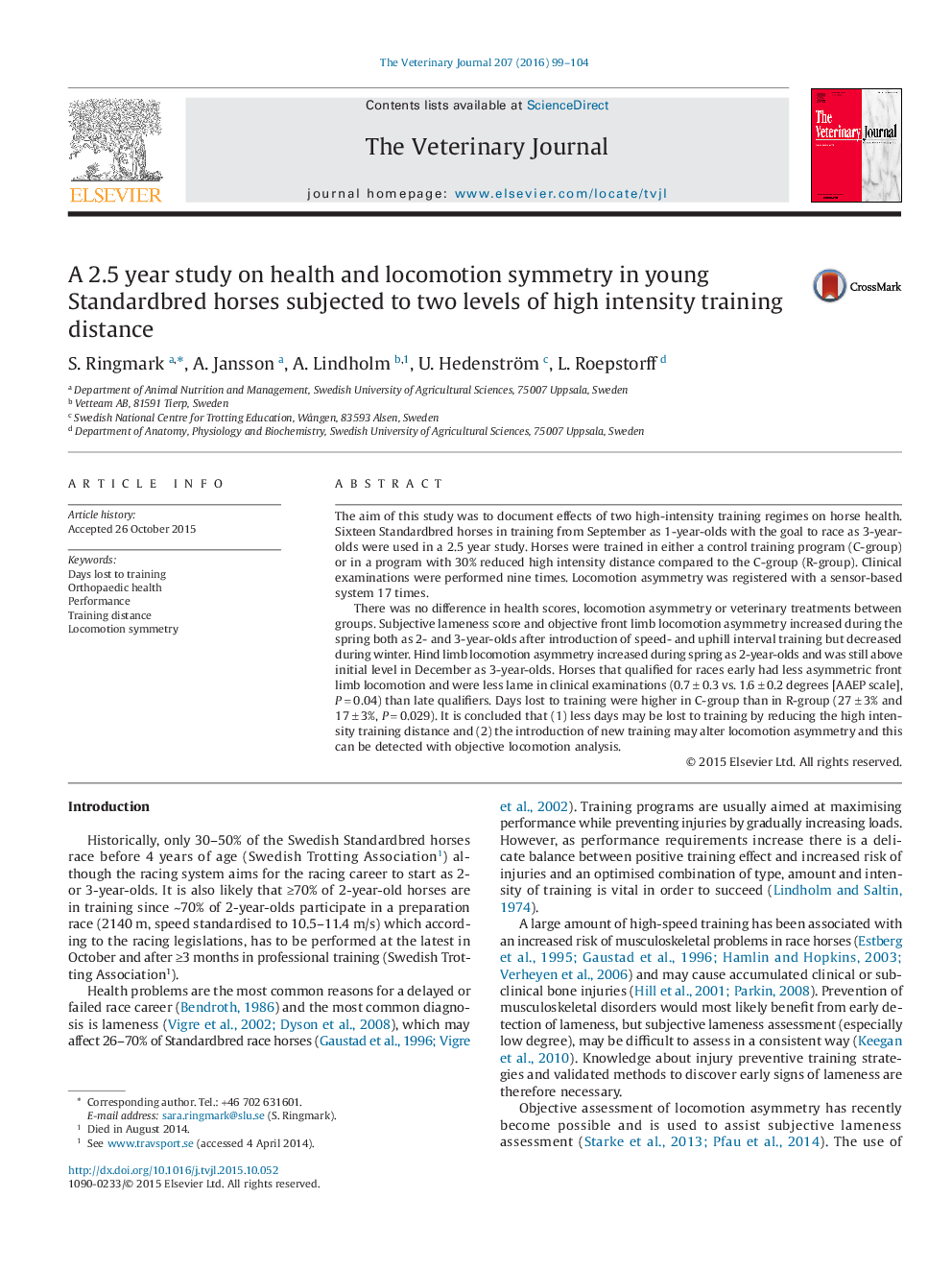| Article ID | Journal | Published Year | Pages | File Type |
|---|---|---|---|---|
| 5797532 | The Veterinary Journal | 2016 | 6 Pages |
Abstract
There was no difference in health scores, locomotion asymmetry or veterinary treatments between groups. Subjective lameness score and objective front limb locomotion asymmetry increased during the spring both as 2- and 3-year-olds after introduction of speed- and uphill interval training but decreased during winter. Hind limb locomotion asymmetry increased during spring as 2-year-olds and was still above initial level in December as 3-year-olds. Horses that qualified for races early had less asymmetric front limb locomotion and were less lame in clinical examinations (0.7â±â0.3 vs. 1.6â±â0.2 degrees [AAEP scale], Pâ=â0.04) than late qualifiers. Days lost to training were higher in C-group than in R-group (27â±â3% and 17â±â3%, Pâ=â0.029). It is concluded that (1) less days may be lost to training by reducing the high intensity training distance and (2) the introduction of new training may alter locomotion asymmetry and this can be detected with objective locomotion analysis.
Keywords
Related Topics
Life Sciences
Agricultural and Biological Sciences
Animal Science and Zoology
Authors
S. Ringmark, A. Jansson, A. Lindholm, U. Hedenström, L. Roepstorff,
